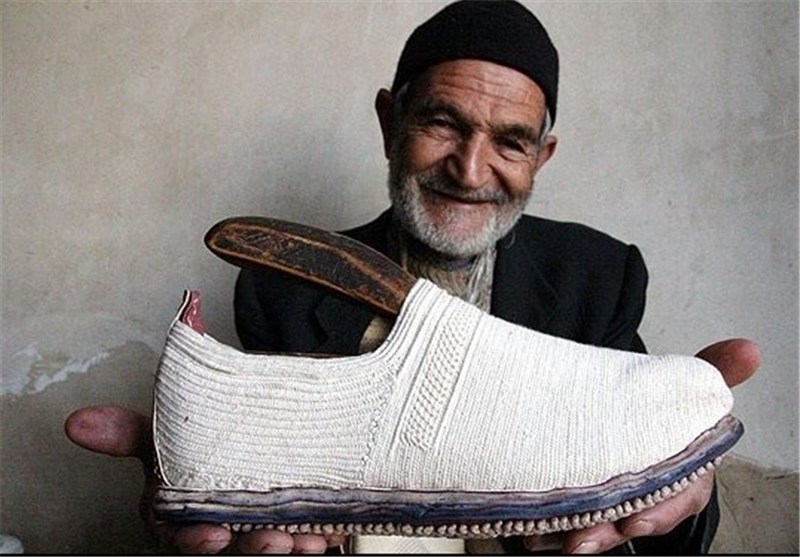Iran Press/Iran news: Persian handicrafts have a long history, as Iranians have always excelled in art and culture. One of the aircraft to be found across Iran, particularly the West, is Giveh the traditional Iranian shoes.

History Giveh
According to many documents the very first pair of Giveh is said to have been worn by Giv, an Iranian legendary figure of the epic Book of Kings, Shahnameh. According to Ferdowsi, the famous Iranian poet and the author of Shahnameh, Giv is the son of Goodarz and son-in-law of Rostam, the most celebrated hero of Shahnameh.
Making giveh is one of the oldest crafts of Kermanshah. Remains of Giveh and tools for making them that have been discovered in the area of Pir Shalimar in Uraman are evidence that it has more than a hundred years of history.
Craftspeople in the west-central city of Senjan, Markazi province, are making pairs of “Giveh” traditional handwoven shoes. In the old days, giveh was worn by most people in Iran, especially in rural and mountainous areas. Giveh usually comes in two colors (black or white) with a leather sole and a durable handwoven top made from wool.

Giveh's Features
One of the great characteristics of Giveh shoes is that they keep feet cool thanks to the specific and natural materials used to make them, as well as the presence of pores in the fabric of the shoe top that allows ventilation inside the shoes, thus preventing any unpleasant odor.
Giveh shoes adapt perfectly to the shape and morphology of the feet, from their top to their soles, the more you walk in them. They are also known to relieve fatigue and pain in the legs while walking. These features make Giveh shoes still very popular despite the huge number of modern shoes manufactured by shoe factories in the market.

Production of Giveh
The upper part of Giveh is usually made from cotton yarn, while the sole is made of textile, leather, or plastic. Making the upper is completely done by women at their homes. They sew the upper using a kind of needle that is called “Javaldooz”. But it is men who make the soles because they need more strength in the production process. This part is usually done in workshops.
In Kermanshah, there are four types of giveh; flat Ajideh Giveh; flat leather Giveh; flat plastic Giveh; and Giveh with silk upper. The flat Ajideh Giveh is more expensive and has high quality.

These are shoes that last a lifetime, and they have a lot of work behind them. All stages of the production of Giveh shoes are manual. Their top is generally made of two types of silk thread and cotton thread, and it can be washed innumerable times. Their sole has 3 layers, one of cotton, one of cowhide and one of leather (or rubber). Giveh shoes top is made mostly by women, always by hand, and on average a woman takes about 20 to 40 days to weave a pair of shoes, depending on the number of twists in the cotton and silk thread. Their soles and the final assembling is a men’s job. If you wander an Iranian market you can often see artisans making Giveh shoes inside small shops.

Giveh shoes are an investment from the point of view of the environment: as they are made only from natural materials, they do not cause any environmental pollution during their production, and even after many years, as their materials are completely natural they decompose in less than a year, returning to their natural elements.
Read More:
Tabriz Hand-Woven Carpet Goes to Paris 2024 Olympics
Ashkan Salehian

